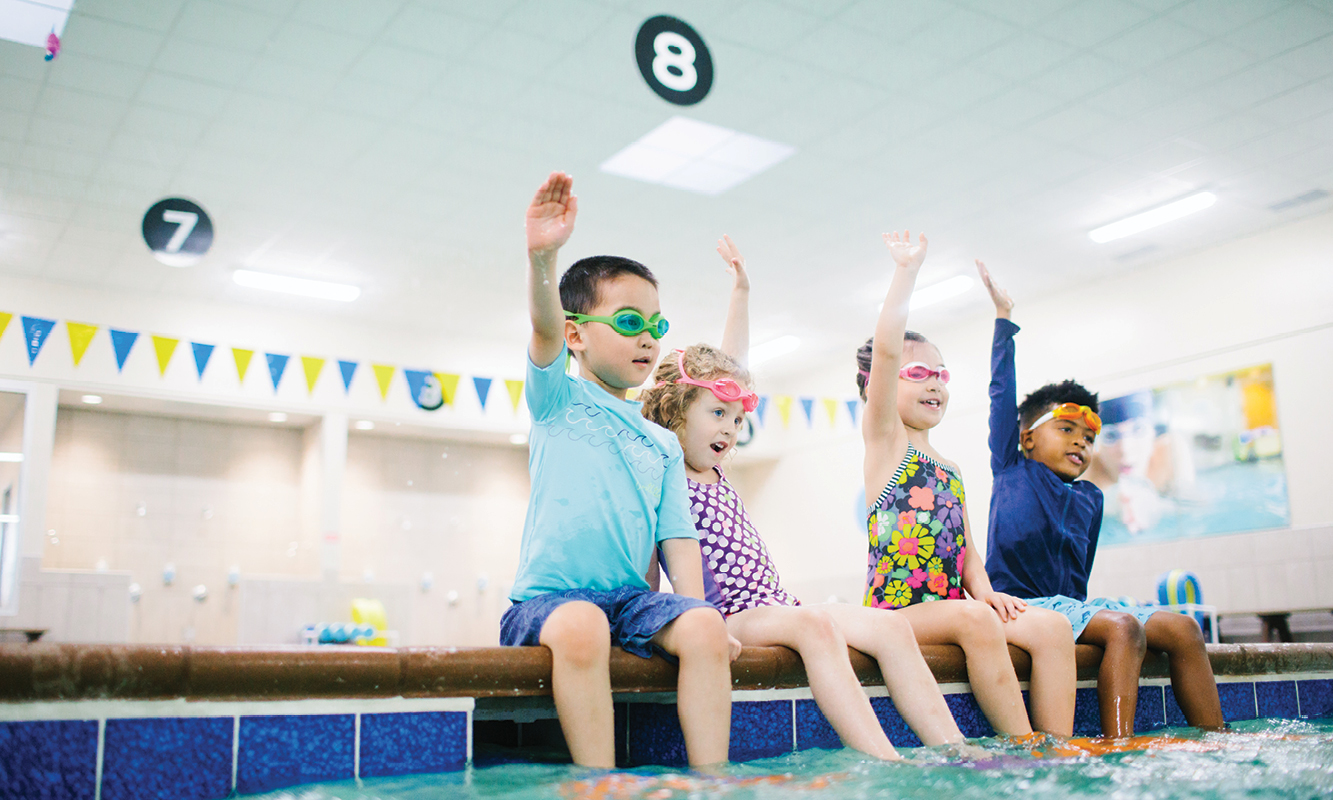With fall classes back in session, parents everywhere are getting back in the habit of checking backpacks and reminding their kids to get their homework done. While you’re at it, don’t forget to do swim school homework too!
Our teachers only get a short time with students each week, so homework is especially important to progression. It’s part of why we want to have close relationships with parents and have them watch what we are practicing in the pool. At the end of any class, ask the teacher what homework should be completed before the next class to keep your child progressing as fast as possible.
The good news is you don’t need to own a pool or have a health-club membership to do our homework. When we say homework, what we mean of course is practice and repetition of key motions or actions. This can have two purposes: First, it builds strength of muscles that may be needed for a particular stroke or skill but that may not be likely to be much exercised otherwise. Second, it builds muscle memory or comfort with the action, so that there is less regression between weekly classes.
What does swim school homework look like?
Each teacher will assign the homework that makes sense for a given swimmer—it often won’t be the same across a class. It will vary by skill as well—our teachers have scores of different “assignments” they can choose from, all part of our curriculum. In general, a student can do their homework in anywhere from a few to ten minutes per day. The assignments tend to fall in certain categories:-
Acclimation homework:
This may include taking a bath and getting water poured over a child’s face, especially if they are babies or toddlers just getting familiar with water. Other examples can include putting face and ears underwater, humming bubbles underwater or similar actions. -
Strengthening homework:
This homework will aim to build strength or endurance in a particular motion. Make a game of kicking off a loose sock by flipping the foot about rapidly—this limbers the ankle and works those muscles. Or lay on a bed face-down and kick a pillow to practice a good kicking motion as the bed prevents the knees from coming up, a common challenge for kids learning a flutter kick. -
Muscle memory homework:
These assignments remind students how it feels to have proper form even when they can’t get in the pool, so it’s more natural to have that form at the next lesson. An example is walking on their heels, which encourages them to point their toes up. When swimming the breaststroke, the toes should point at the bottom of the pool so the bottoms of the feet can push against more water, so this homework reminds them of that feeling.
